Overview
In my interactive fiction “Eternal Bargain,” economic disparity has grown so severe that lifetime is no longer an equalizer. Lifetime has become a finite and tradable commodity. Under a set of unfortunate circumstances, time is no longer something that everyone is born entitled to.
After graduating in an unstable job market, the protagonist, or the player, is unemployed and has spent the last five months looking for work, but to no avail. They struggle to get by in a society where people can donate their lifespan for money or purchase additional years to extend their own lives. The protagonist is given the choice to entertain the “Chrono market” and consider donating lifetime years for money or to stay away from it completely. However, after a tragic event, the protagonist is forced to make morally challenging decisions as they are charged with a massive debt. With a greedy corporation “LifeCorp” and government agencies taking advantage of the protagonist’s dilemma as an opportunity to steal a significant chunk of their lifetime, the protagonist has two choices: to lose time or to flee.
In “Eternal Bargain,” those with vast resources can continue to amass lifetime years, ensuring longevity and prosperity for themselves and their loved ones. Meanwhile, those who struggle to make ends meet are forced to trade away precious years of their existence just to stay afloat. This system, like many real-world economic structures, perpetuates a cycle of privilege and disadvantage.
I hope this experience will provide players with a sobering reminder of how our own society grapples with issues of inequality, where economic disparities persist and can lead to the downfalls of the disadvantaged.
Concept Ideation
After learning about the requirements of P2, I knew immediately that I wanted to focus my dystopia around economic disparity. In the United States, especially Silicon Valley, money makes the world go round, and I wanted my dystopia to reflect the faults of our real-world society.
Therefore, the world and narrative that I designed were inspired by real experiences. For example, my interactive fiction is set during a time of economic crisis where the job market is slow. As of November 2023, the Silicon Valley job market is tough, and current college graduates might be able to relate to the protagonist’s experience of desperately looking for a job. Since I mainly playtested on Stanford students, I also intentionally developed the protagonist to be a recent college graduate.
Furthermore, my interactive fiction alludes to real places. For example, I modeled LifeCorp Park based on the real-world Apple Park. The descriptions of LifeCorp Park can add to the player’s experience if they catch this similarity. However, since it is not a core mechanic, it will not detract from the player’s experience if they don’t recognize this connection.
Initial Spatial Mapping
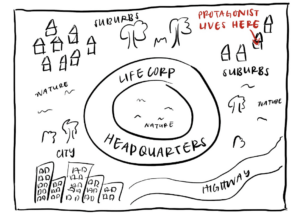
Figure 1 – “Eternal Bargain” dystopia map
*Keep in mind that this spatial mapping is not representative of my final submission. In my interactive fiction’s final prototype, the protagonist lives in the city, and the only locations mentioned are the city and LifeCorp Park.*
Playtest 1
Player Demographics: 4 players: 22 W, 21 W, 22 W (CS377G students) 56 W (CS377G lecturer)
Date: 10/19/23 in-person
Observations + Feedback
- Easy to understand dystopia and context
- Like that plot allows you to have own opinions and choices but you truly don’t have much of a choice in dystopian world
- Implement escalator for the plot, things that force player to make difficult choices
- Try to condense text for LinkedIn message
- Consider experiences that player goes through
- What types of people are in this world? Donators? Buyers? People who are completely against the Chrono market?
- End state suggestions: 1) lose years and be an old lady 2) run away to woods and live a self-sustaining lifestyle 3) fight against corporation
Implications + Changes Made Before Playtest 2
- Merge Adam’s LinkedIn message from two screens into one, by putting responses and choices into the same screen
- Introduce elderly woman character that opposes the Chrono market and has lived in a world where donating lifetime years was not yet possible
- Start brainstorming possible endings & possible “escalators”
A Screen that the Player Gave Feedback On
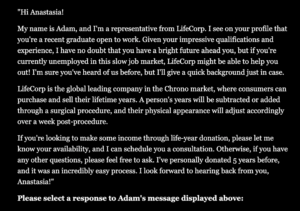
Figure 2 – “I didn’t like that the same LinkedIn message is shown again on a second screen.”
Playtest 2
Player Demographics: 21 M (Stanford student)
Date: 10/21/23 in-person
Observations + Feedback
- Nice that protagonist will be relatable to most college students in a slow job market
- Is gender important in the game?
- Did not like being called “Anastasia”
- Maybe choose a more gender-neutral name for relativity
- Found narrative intriguing but since it was unfinished, still curious about where it was going to go
A Screen that the Player Gave Feedback On

Figure 3 – “Who is Anastasia? Not me.”
Implications + Changes Made Before Playtest 3
- Code up variable for protagonist’s name so that players can input their own names and be referred to by it throughout the fiction
- Continue narrowing down on possible escalators as the next stage of the fiction
Playtest 3
Player Demographics: 20 M (CS377G student)
Date: 10/24/23 in-person
Observations + Feedback
- Enjoyed user autonomy– thinks it’s a great use of persuasive rhetoric
- Liked that ethics was immediately brought into the story
- Liked that elderly woman represents a particular point of view
- Liked that she advocates for not donating and for the value of life
- Found LinkedIn message relatable
- Liked that the narrator meets the elderly woman regardless of whether they go to the consultation or not
- Wondering where it is going…
A Screen that the Player Gave Feedback On
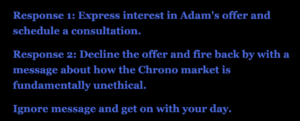
Figure 4 – “I like that ethics is involved here and that I get to make choices that all seem like they lead to different outcomes.”
Implications + Changes Made Before Playtest 4
- Finish writing most of the story, including the escalator – the protagonist’s house burns down and they have to face losing ~27 years or run away
Playtest 4
Player Demographics: 26 W, 29 M (Non-Stanford)
Date: 10/27/23 in-person
Observations + Feedback
- Engaging premise
- Liked that they refused to be involved in the Chrono market but their house burning down introduces drama into the narrative
- Enjoyed the branching and freedom to make choices based on their individual beliefs
- Found the narrative well-written and compelling
- Found the fire climactic but since the story was not complete, it felt very sudden
- Found minor bugs in text formatting
A Screen that the Player Gave Feedback On
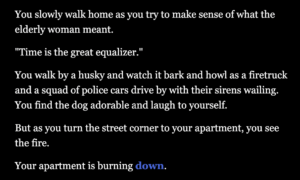
Figure 5 – “You can’t end the story here when we just hit the climax.”
Implications + Changes Mage Before Playtest 5
- Completely finish writing the interactive fiction to facilitate better, more holistic playtests
- Address identified bugs to support a smoother gaming experience
- Decided that every path will lead to the same ending, losing time, to emphasize the unfortunate, uncontrollable consequences of economic inequality
Playtest 5
Player Demographics: 22 M (CS377G Student)
Date: 10/31/23 in-person
Observations + Feedback
- Felt good
- Skimmed some of the readings – felt long
- Liked that the narrative used his name
- Found the concept compelling
- Liked the socioeconomic topics: corporations, inequality, the rich, health
Implications + Changes Made Before Playtest 6
- Trimmed down some of the readings that felt redundant or long, without taking away from the narrative
Playtest 6
Player Demographics: 21 W (CS377G Student)
Date: 11/2/23 in-person
Observations + Feedback
- Willingly chose to go to consultation and reacted positively to donating lifetime years
- “$75,000??? That’s a lot”
- Felt like the readings were a good length, not too much to read, like a short story
- Verbal gasps throughout the story
- “I get the metaphor”
- Found the narrative compelling and shocking
A Screen that the Player Gave Feedback On
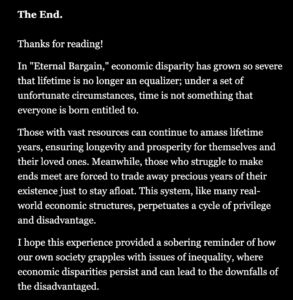
Figure 6 – “I like the final words in the outro.”
Implications + Changes Made
- Publish interactive fiction on itch.io!
Link to Game
*Please feel free to click on the link above to play “Eternal Bargain”!
Reflection
Overall, it was a very rewarding experience designing and writing “Eternal Bargain,” an interactive fiction focused on economic disparity. I was surprised by how much time and effort it took to write an interactive fiction; due to the branching, this project often felt much longer than writing an essay. It was very insightful to playtest the game before the narrative was fully written. This allowed me to take inspiration from my playtesters, one of whom encouraged me to introduce characters with unique perspectives in my story, such as the elderly woman. It was also exciting to build escalating events like an apartment fire to raise the stakes and drama, which many of my early playtesters craved. Playtesting, iterating, and refining was a tedious but worthwhile process; I never imagined that I would publish a final interactive fiction on itch.io.
From this project, I learned the value of early and continual playtesting to get feedback and improve the quality of my narrative. I learned how to structure branching narratives and utilize the tools in Twine to integrate choices and give players a sense of autonomy while commanding control of the story. I loved being able to create different paths yet making them all lead back to the same unfortunate ending. I also learned the importance of escalators or turning points to drive my plot forward. The process of iterative development and responding to user feedback while writing the narrative definitely contributed to my learning along the way.
Next time, I would playtest even earlier to get feedback on the core concept. I would try to brainstorm the events that I want to take place in my narrative, such as the introduction, turning point, and end, before jumping into the details of writing. In an ideal world where I had more time, I would test on a wider variety of demographics beyond mainly Stanford students. I would also play around with Twine more to build in more metrics to track player choices and paths taken.


